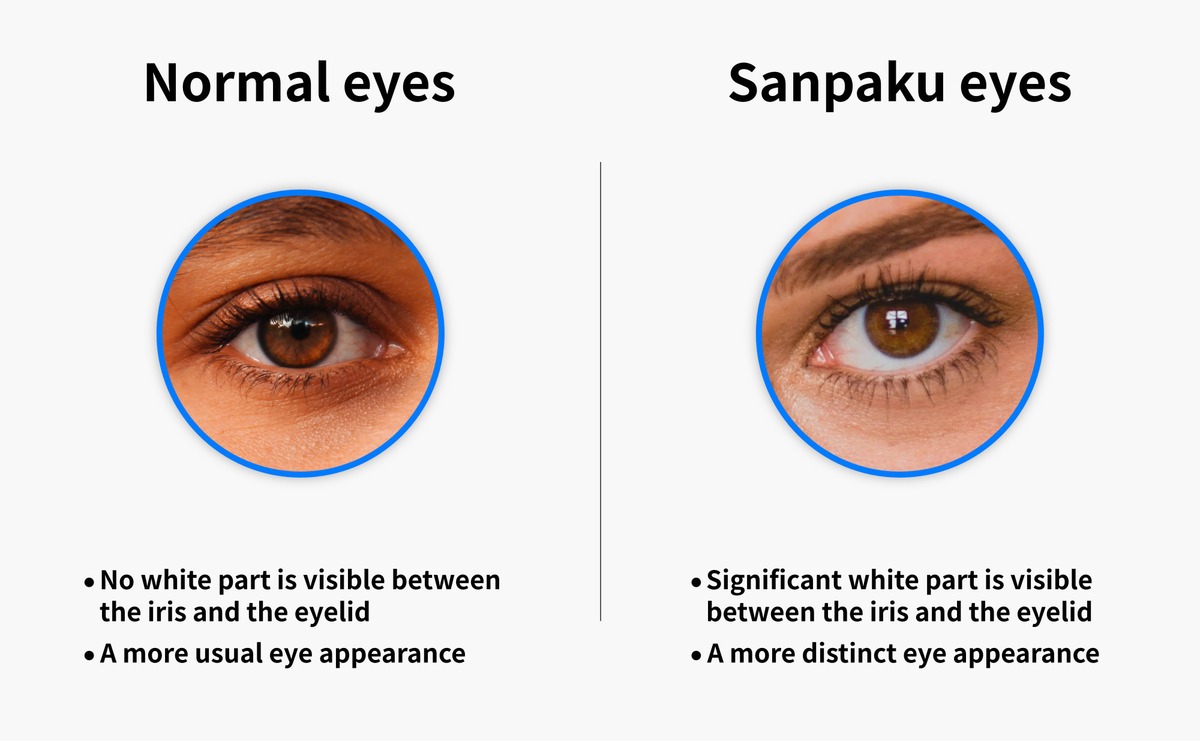From TikTok speculations to YouTube discussions, the superstition surrounding sanpaku eyes appears to be prevalent across the internet, particularly following the tragic passing of TikTok sensation Brian Chira in a road accident.
Translated, sanpaku, which originates from Japanese face reading, means “three whites,” which refers to how you can divide up an eye into pieces, with the whites taking up three of the four segments. Sanpaku is when you can see the white of somebody’s eye either above or below the iris.
Typically, it's an unremarkable detail that might go unnoticed. However, according to a Japanese superstition, sanpaku eyes could potentially serve as an indicator of one's fate.

Did you read this?
This belief gained significant traction in the Western world during the 1960s when Japanese author George Ohsawa started predicting the deaths of prominent American figures like Marilyn Monroe and John F. Kennedy based on their eye alignment. Since then, speculation has persisted regarding the potential correlation between sanpaku eyes and an individual's destiny.

In his 1965 book titled You Are All Sanpaku (published under his pen name Sakurazawa Nyoiti), Ohsawa introduces sanpaku as “a condition of the human eye which presents three white sides or areas around the iris.”
According to Ohsawa, the notion of sanpaku has been present in Eastern philosophy for centuries, indicating a state of physical, spiritual, or physiological imbalance.
Individuals with sanpaku eyes usually belong to one of two categories: yin sanpaku and yang sanpaku. Yin sanpaku eyes are characterized by the presence of white sclera beneath the iris. If the whites are visible below your iris, beware—according to this belief, it signifies that the world may pose a threat to you.
This condition supposedly indicates susceptibility to danger from the external world. Individuals with yin sanpaku eyes are believed to be more prone to encountering peril, either inflicted by others or self-induced. According to the superstition, they are also more inclined towards involvement with substances like drugs or alcohol and are thought to be at a higher risk of meeting a tragic demise. Notably, celebrities such as Princess Diana, John F. Kennedy, Abraham Lincoln, Marilyn Monroe, Jim Morrison, Elvis Presley, and Audrey Hepburn are infamous for possessing yin sanpaku eyes.

Individuals with yang sanpaku eyes exhibit visible sclera above the iris. In contrast to yin sanpaku, where white below the iris suggests external danger, white above the iris indicates internal peril—difficulty in controlling emotions leading to destructive behavior.
According to superstition, those with yang sanpaku eyes are more prone to perpetrating acts of tragedy and violence. They are often associated with being aggressive or violent towards others. Notably, infamous figures like murderous cult leader Charles Manson are cited as examples of individuals with yang sanpaku eyes.
While many perceive the presence of white beneath or above the iris as a common physical characteristic, some in the field of alternative medicine suggest that it could signify an underlying physical or mental ailment disrupting the body's equilibrium.
According to these practitioners, the presence of white under or above the iris may indicate a disharmony between the spirit, mind, and body. From a scientific perspective, there might be some validity to this notion.
Many individuals grappling with substance abuse or various mental health issues often display some level of sanpaku eyes, characterized by the presence of white above or below the iris. This observation finds support in certain scientific findings.
For instance, conditions like extreme fatigue, chronic stress, and the impact of substance abuse, including drugs and alcohol, can all impact the optic nerve. Frequently, these factors lead to a contraction that elevates the iris and reveals white beneath it.

“Sanpaku eyes” isn’t actually an official medical term or condition (a more medically accepted term in the West is “scleral show”). Some people’s eyelids just develop to show more of the sclera—it doesn’t have anything to do with a person’s health, personality, or fate.
A scleral show can also happen naturally as you age, depending on your eye size and cheek structure. You can also “give” yourself sanpaku by widening your eyes and/or tilting your head a certain way.
Sanpaku can also happen due to medical reasons such as a physical trauma or ectropion, which causes a person’s lower eyelid to rotate outward, which makes more of the lower sclera visible. After a blepharoplasty (eyelid surgery), some patients experience a scleral show and ectropion around their eyelids.
In his book, Ohsawa promotes the macrobiotic diet as a remedy for individuals exhibiting signs of sanpaku eyes. This diet, devised by Ohsawa himself, encompasses a blend of dietary recommendations and lifestyle habits.
The macrobiotic diet advises adherents to structure their meals with 40-60% whole grains, 20-30% vegetables and fruits, and 10-25% legumes. Additionally, it advocates for certain lifestyle practices, such as avoiding the use of microwaves, refraining from consuming caffeine and alcohol, and incorporating other health-promoting habits.
Modern health experts warn that diets like this one aren’t always the healthiest, and can lead to nutrient deficiencies (like vitamins, iron, protein, and calcium).
However, psychologists say Sanpaku eyes don’t signify an early death or violent future. Psychology Today states, “All of those TikTok conspiracy theory videos can seem really convincing, especially when they show tons of celebrities who are apparent “victims” of the sanpaku curse.
In truth, the deaths of these individuals are merely sad coincidences—countless famous figures without sanpaku eyes have also experienced tragic fates or have been involved in violent acts. Ultimately, the power of superstitions is determined by one's own beliefs and interpretations. By acknowledging the control and autonomy individuals possess in their own lives, the perceived "curse" of sanpaku loses its ominous grip.











